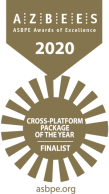Dallas, TX – In light of the recent mass shooting in Orlando, FL, show organizers are on heightened alert when it comes to keeping exhibitors and attendees safe. What can you do to protect your show? Security professionals from United Security Services Inc., a national provider of security services that specializes in hotel, convention and trade show security, provided members of the International Association of Exhibitions & Events (IAEE) with the best practices used in preparing for and responding to an active shooter incident during a webinar yesterday.
Bill Callaghan, Vice President/Director of Security Specialists for United Security Services Inc., and Ken Grandy, Security Specialist for United Security Services Inc., shared a modified version of the company’s active shooter training module, which was developed with input from industry experts and Homeland Security professionals.
“Awareness and preparedness are key to helping protect our employees, our customers and ourselves,” said Grandy. “Although many perpetrators have a history of negative – sometimes violent – behavior, there is no single, one-size-fits-all profile of an active shooter.”
But there are some commonalities. According to an FBI analysis of 154 active shooter events that included three or more individuals being shot in the US between 2002 and 2012, 96% were male and acted alone. Of those, 51% of the shooters died after the event, but only 8% were shot and killed by responders while 43% committed suicide.
“In most cases, there’s no pattern in the selection of victims, and we’ve seen a variety of locations – workplaces, schools, theaters, outdoor dining establishments, etc.,” said Grandy. “Most are unpredictable, and they evolve quickly. According to an FBI report, 70% end within 5 minutes or less. Keep in mind the police response can take 4 to 5 minutes.”
When faced with an active shooter incident, there are really only three options: Run, hide or fight. The presenters shared a video about surviving an active shooter event. The video demonstrates each of these scenarios, and it may be helpful to share with show staff. To view the video, go to: https://www.youtube.com/watch?v=5VcSwejU2D0&feature=youtu.be
To prepare for an active shooter incident, it’s important for show organizers to communicate with building and hotel security, as well as security contractors, to discuss response plans. (See sidebar, “What to Ask Your Security Team.”)“If you are contracting security, then you might have two plans – one from the building and one from the security contractor,” said Callaghan. “Marry those two, and make sure everyone is on the same page.”
Determine rallying points and a communications protocol as part of your response plan. “I wouldn’t recommend publishing that information,” said Callaghan. But he suggested providing exhibitors and attendees with a floor plan layout that highlights the exits, as well as information to contact local police, fire and the closest hospital.
“I hate to say it, but active shooters focus on soft targets,” said Callaghan. “And all shows are soft targets. That’s why target hardening is critical.” Increase visibility of security staff at locations like public entryways and loading docks, he said.
After the incident, respond appropriately when law enforcement arrives, advised Grandy. “Remain calm and follow officers’ instructions,” said Grandy. “First responders are there to stop the active shooter first. They may use tear gas or pepper spray. They may shout or push individuals to the ground, and your reaction may influence others.”
After the presentation, Callaghan and Grandy took questions from the audience. One participant asked about how to handle a no-weapons policy in an open-carry or concealed-carry state. “When you rent a space, you make the rules,” said Callaghan. But you won’t have jurisdiction over the public spaces in the building or the area, he said.
“It is unfortunate that these are the times that we live in, but as show organizers, we are responsible for large numbers of people and it is always better to be prepared for any situation,” said IAEE President and CEO David DuBois, CMP, FASAE, CAE, CTA. “The Active Shooter webinar was well attended and further shows that security at shows is a major concern for today’s organizer community.”
In fact, 258 IAEE members registered for the event, a record number for an IAEE webinar. The recorded webinar is available to IAEE members. Go to http://communities.iaee.com/home to log in and access the content.
Reach David DuBois at (972) 687-9204 or ddubois@iaee.com, Bill Callaghan at (312) 922-8558 or wcallaghan@unitedhq.com, Ken Grandy at (312) 922-8558 or kgrandy@unitedhq.com
Sidebar: What to Ask Your Security Team
Bill Callaghan, Vice President/Director of Security Specialists for United Security Services Inc., shared a list of key questions to address with building and hotel security, as well as with security contractors. He recommended asking questions about the Active Shooter plan during walk-through. “Meet with the security director before the show, and inform security of any special circumstances, threats, protester concerns or special needs attendees,” said Callaghan. Key questions include:
Do they have a response plan?
How do they manage badges?
What assets are available in the city? Police, fire, hospital?
What are their existing rally points for emergency evacuations or in the event of a crisis?
How will management notify you and your team of the situation and its location?
How will personnel allow site and building access to emergency responders?











